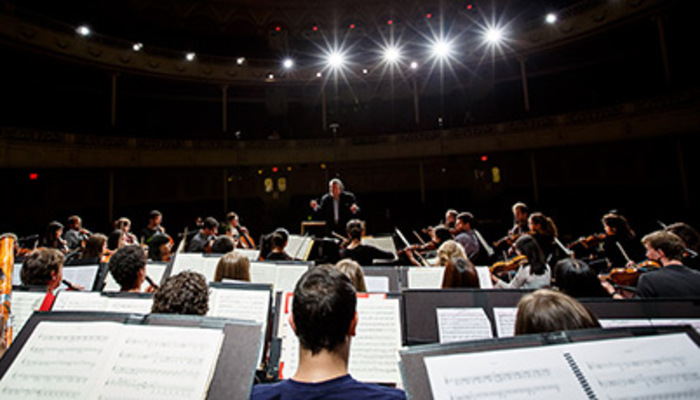It was an emotional evening for many at the Kennedy Center Concert Hall on Tuesday night, when Juan Pablo Izquierdo, the music director of the Carnegie Mellon University Philharmonic, took the podium. It was his final performance after 17 years with the group — years in which he’s built the orchestra into an accomplished interpreter of contemporary music, performing composers from Schoenberg to George Crumb. And from the first notes of “Arcana” — the brash Edgard Varèse powerhouse that opened the program — to the close of Stravinsky’s epoch-making “Rite of Spring,” it was clear that those years have been well spent: Izquierdo is an impassioned and insightful conductor who unleashes 20th-century music in all its raw, explosive glory.
“Arcana,” from 1927, is a work that needs to be experienced in the concert hall; recordings never really capture the huge blocks of sound that Varèse sends hurtling through space, or the elemental force that builds, like a juggernaut, for 20 minutes. And although the Carnegie Mellon players are all students, and understandably lack some of the polish and precision of a professional orchestra, Izquierdo drew a bold and exciting performance from the group that more seasoned players would have been proud of.
Things quieted down considerably for Giacinto Scelsi’s ethereal “Quattro Pezzi” from 1959, for chamber orchestra. Some think Scelsi a charlatan, a nut job, or both; his mature works are marked by a focus on long, sustained notes, which build in intensity through ultra-subtle changes in dynamics and texture, and they’re not for everyone. But the Carnegie’s reading of the provocative “Quattro Pezzi” (whose four sections each consist of a single tone) was exceptionally beautiful, a slow blossoming of elegant sound worlds shimmering with light and grace — enough to make a believer out of anyone.
— Stephen Brookes
To view the original article, Click Here.
